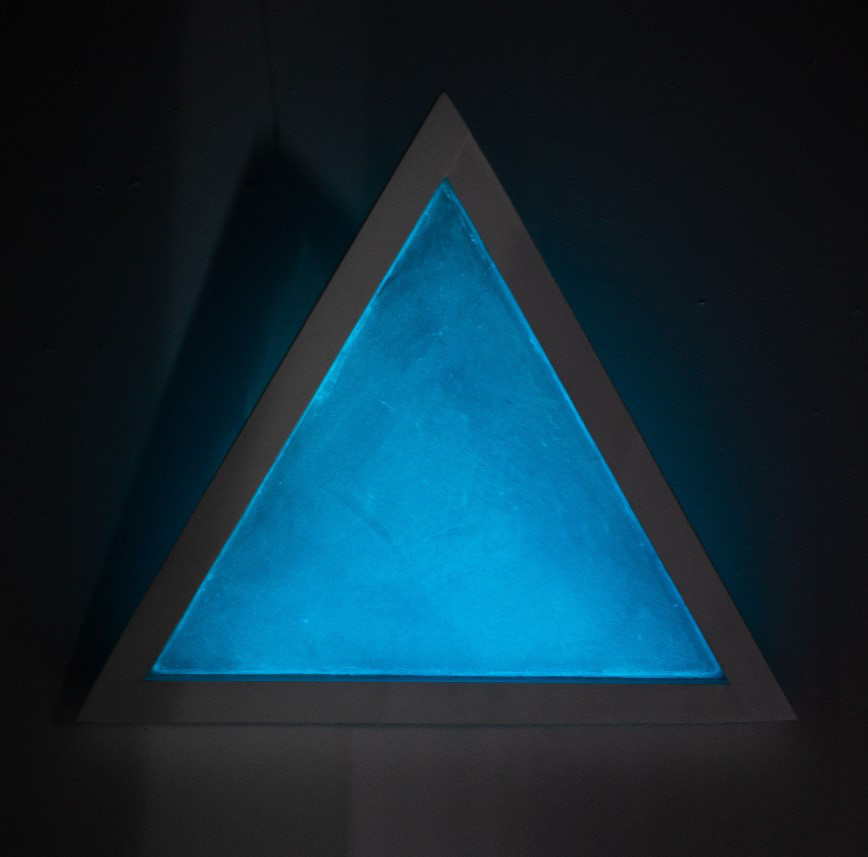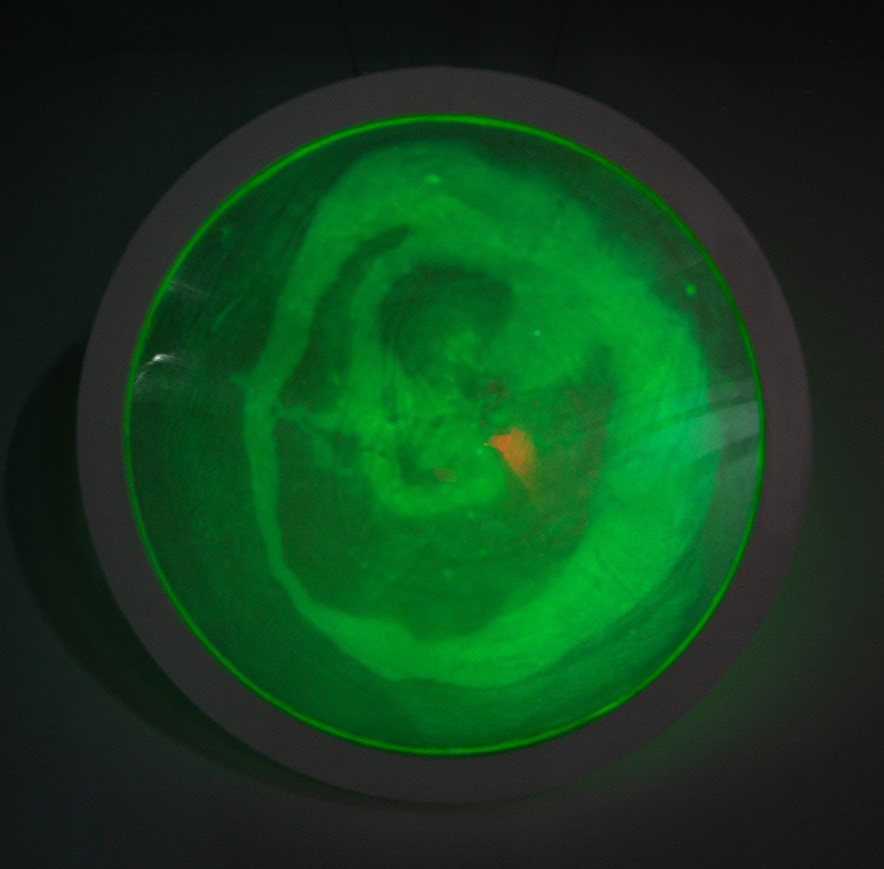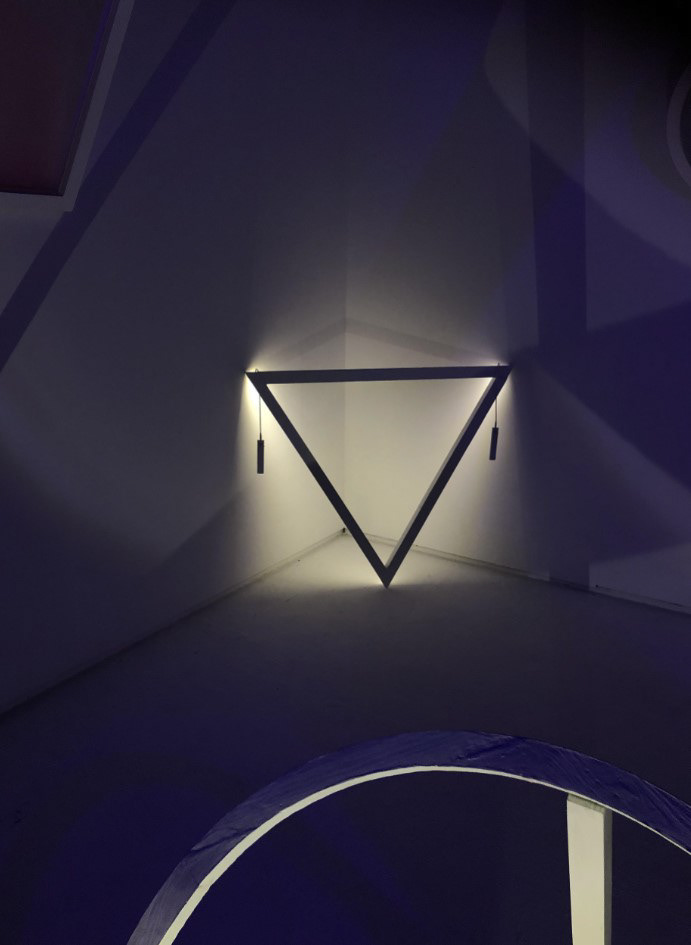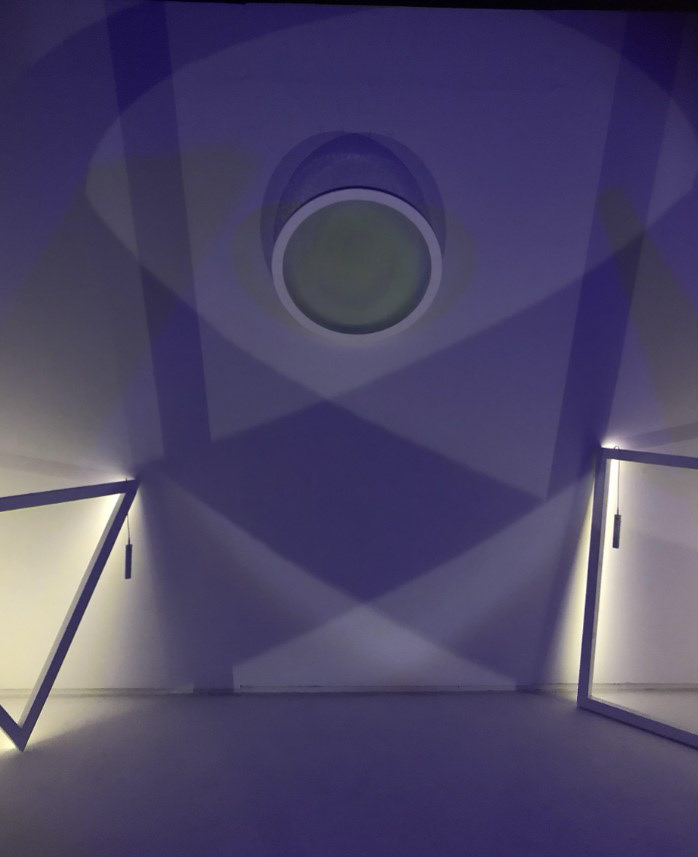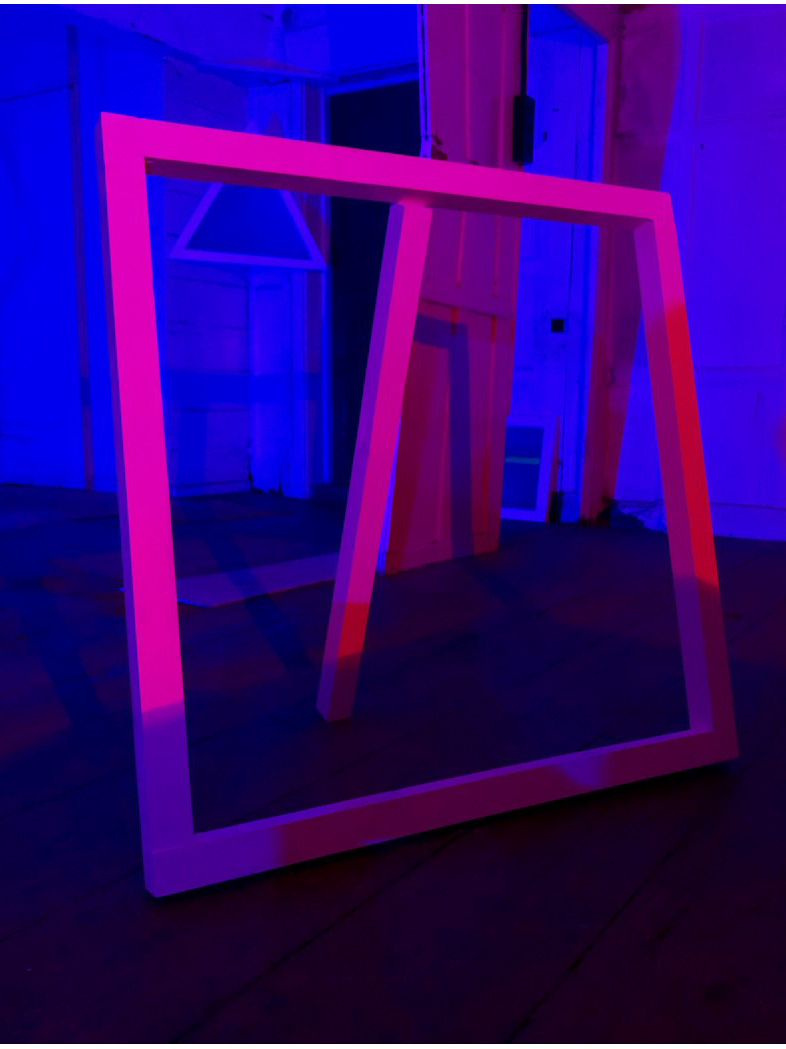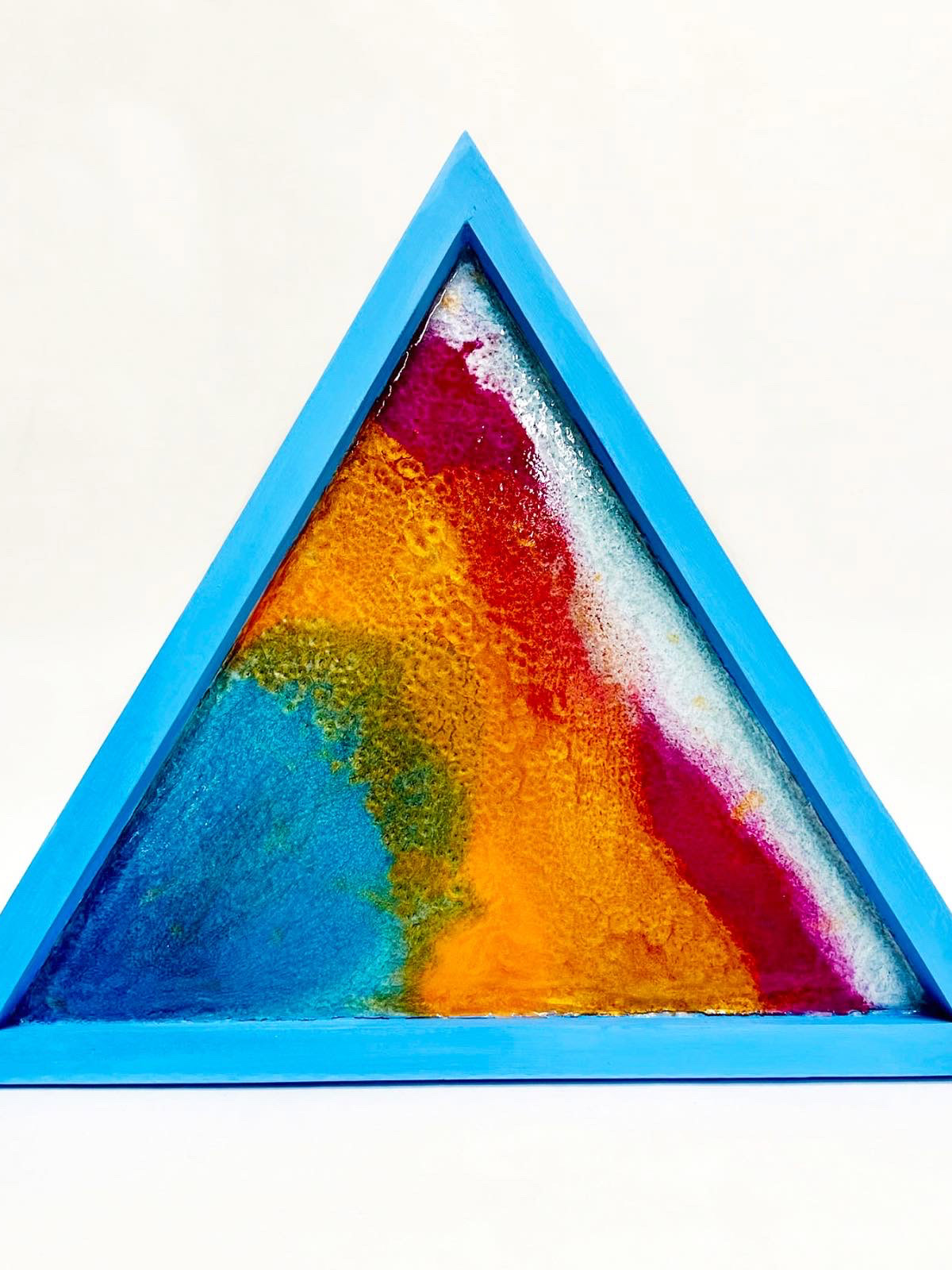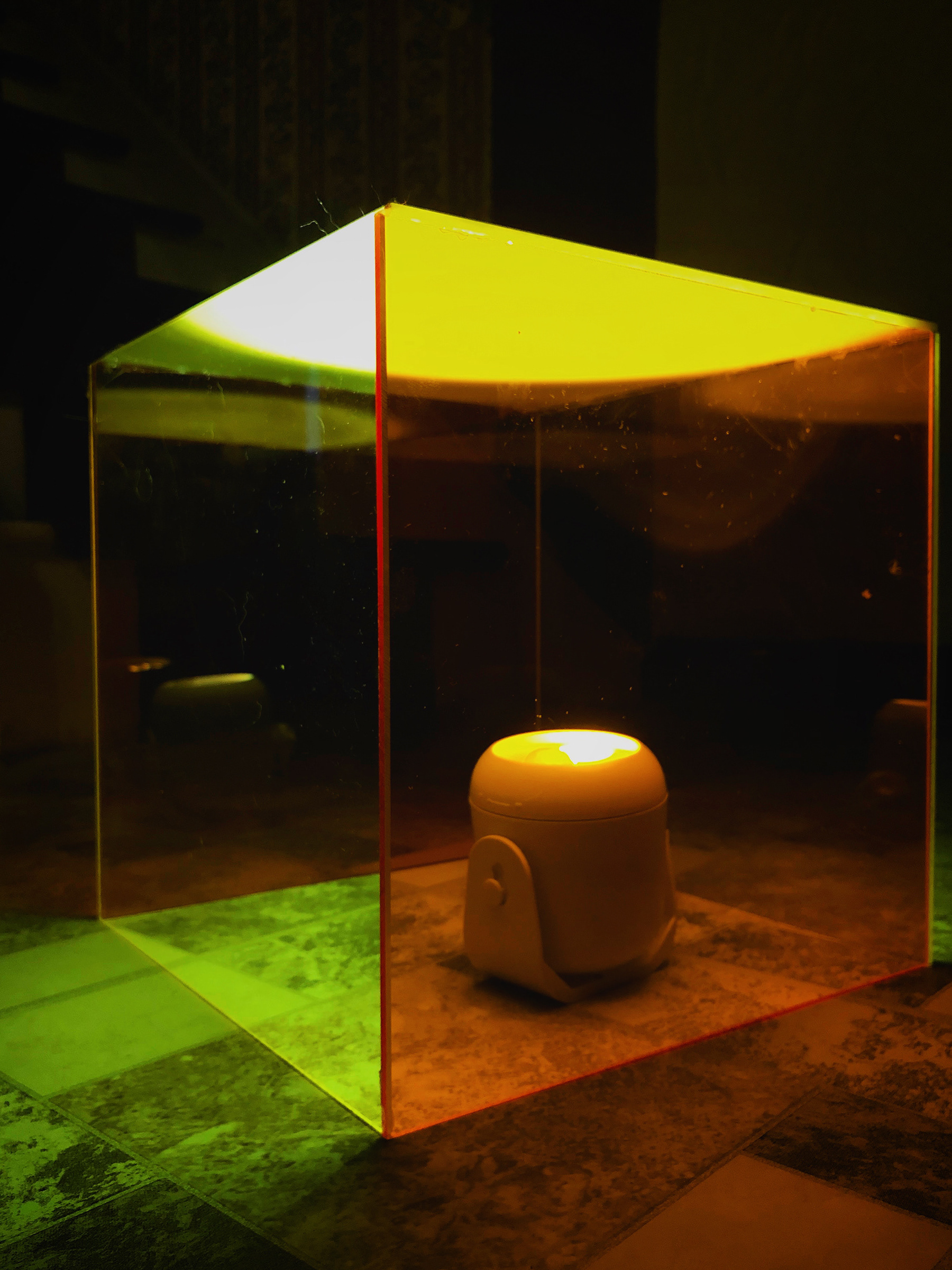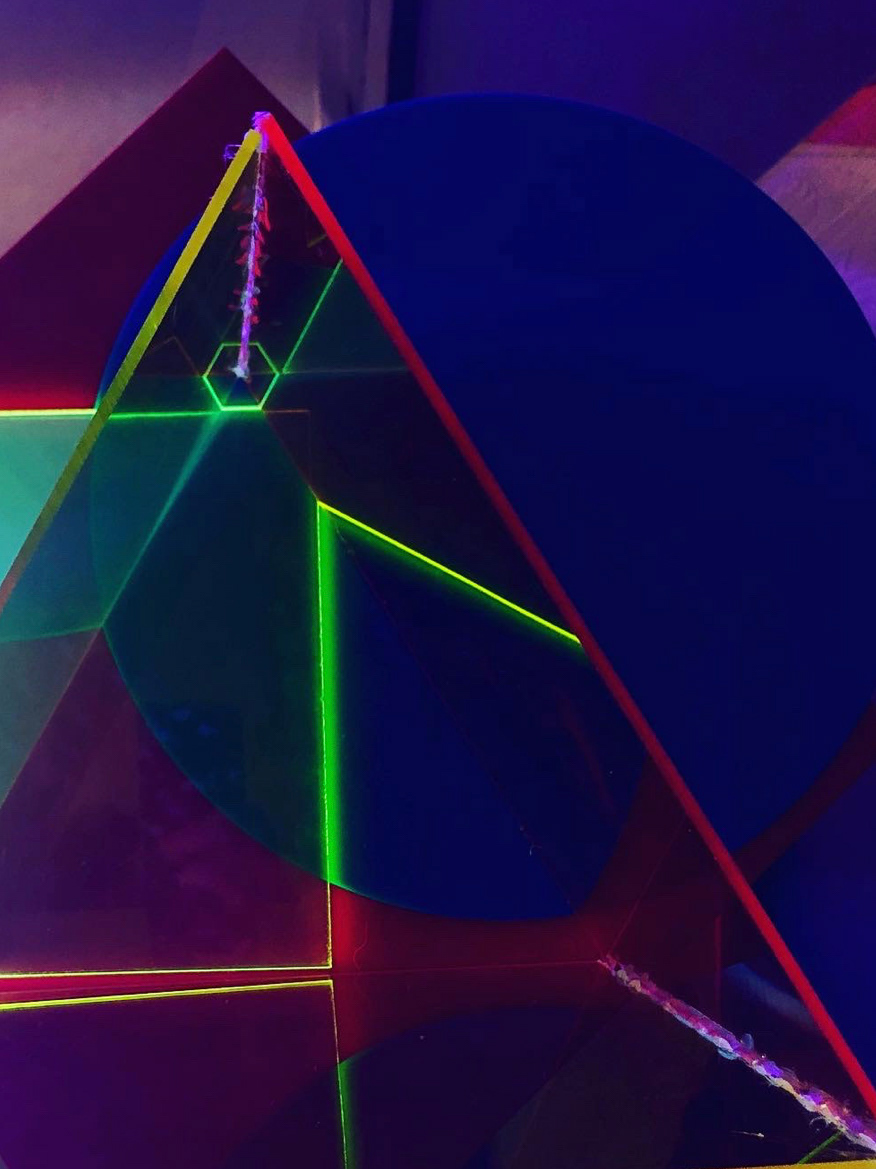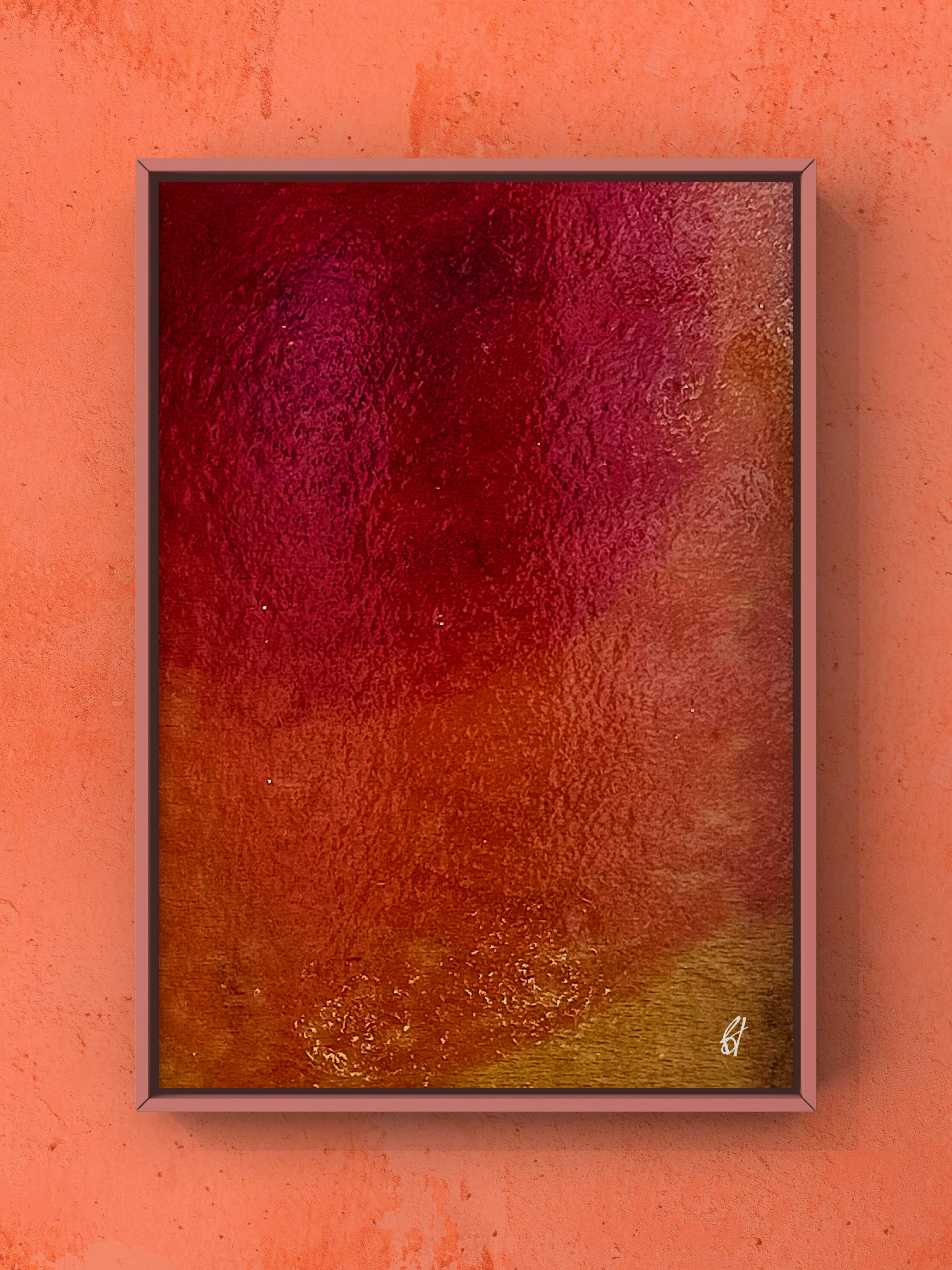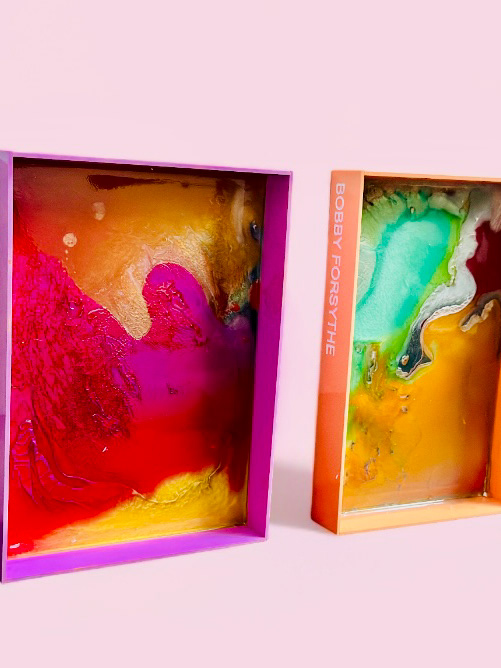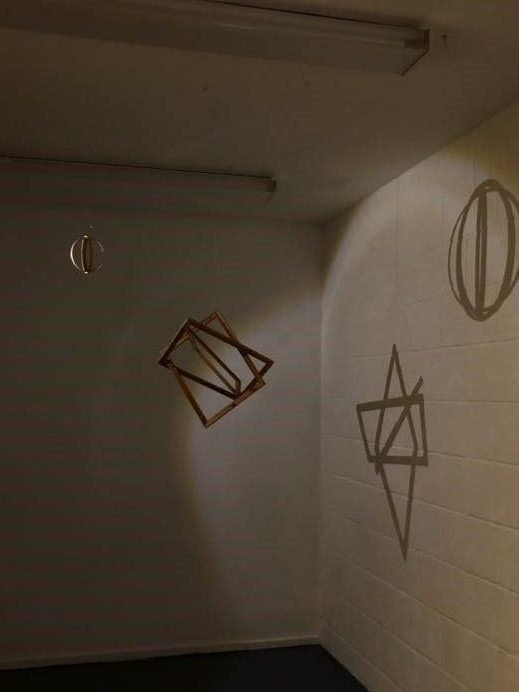''Creating my frames had taken over three hundred hours to make as it was all hand sanded, crafted and painted by myself. This process taught me a lot about presentation and the intention of my art. I got caught up in trying to perfect my frames, to prove to myself that I can create refined work and reading a vast amount of material that relates to Minimalist sculpture somehow blind-sighted my initial intention as to why I began the process of creating by hand.
Painting my space and frames white was an intentional decision that was discovered very early on in my studies. When creating my Doug Wheeler-inspired frames, I wanted to create the illusion that when the lights were on, the frame would blend into the surrounding white space. The decision to maintain that detailing is evident within my final installation. The acrylic/resin frames are entirely obvious when the lights are on, exposing the faint pastel colours. Once the lights go off the only obvious form is the shape within the frame. To extend the pastel colour choice, I decided to paint some of the frames pastel due to the light reactive pigment changing the tone of the white silk paint I was painting the other frames with. It also worked well as It emphasises my response to Minimalism. It is in total contrast to the vibrancy of Minimalist sculpture. The room's interior is also painted white, allowing for the lights to illuminate the room and projecting the shadows works better on a white wall and floor, instead of a black room.
Incorporating resin within my three acrylic frames allowed for the light-reactive pigment to act as a glass sheet. I decided to use resin for my acrylic frames, as my earlier experimentations proved the incredible effect of projecting light through the medium.
My development of creation from mirrors to lights has investigated the countless possibilities I can go to create an immersive environment. Creating a space that requires the beholder’s presence to exist is evident within the aftereffect once the lights go off. My installation for the degree show can be experienced in two stages. The first stage requires movement to activate the lights that are placed around the room. The lights illuminate the frames mounted around the room, revealing a mural composition of shadows and lines on the surrounding walls. The space is large enough for the beholder to sit or stand amongst the frames and this process of staying still evokes the second stage.
Without the beholder, the second stage would never be evident and would never exist. The movement ‘charges’ the light reactive pigment that coats the frames or is encased within the frames and once the lights go off, one by one the room will have frames glowing around the perimeter of the space. To experience my installation, your presence is required. A conclusive thought was discovered by reading into Eliasson’s creations.
The intention of my art is to experience. To focus on the importance of shapes and lights instead of the finish. And most importantly, to become immersed within a room full of shapes.''
